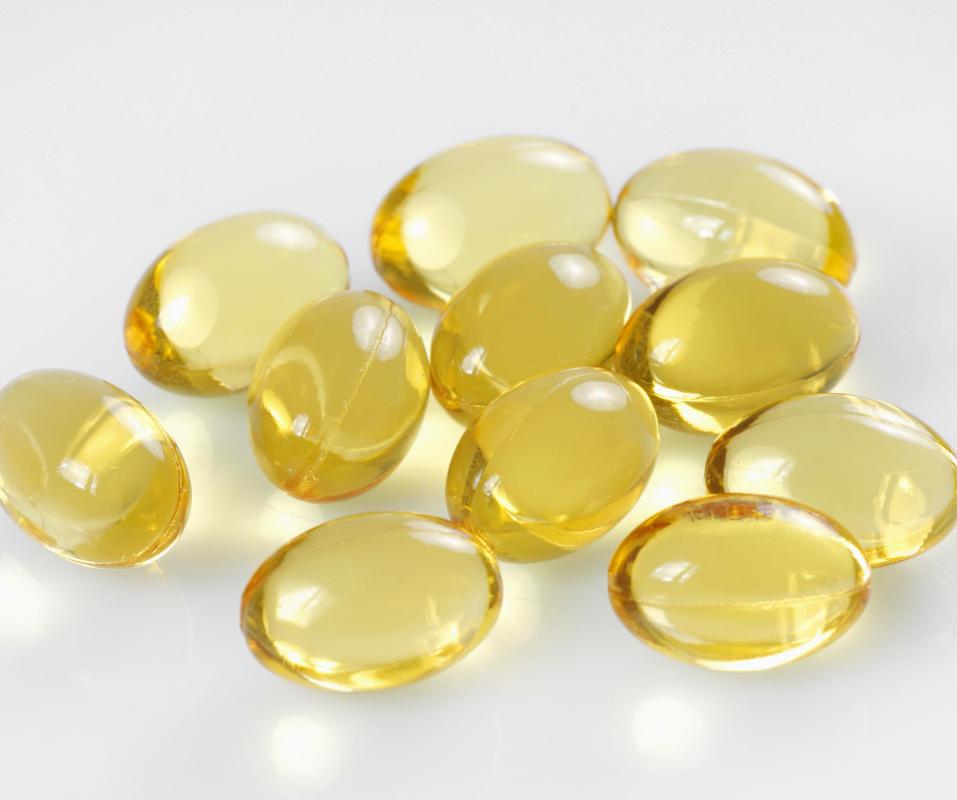At WiseGEEK, we're committed to delivering accurate, trustworthy information. Our expert-authored content is rigorously fact-checked and sourced from credible authorities. Discover how we uphold the highest standards in providing you with reliable knowledge.
What is the Connection Between Tanning and Vitamin D?
When sun hits unprotected skin, it activates cholesterol which synthesizes vitamin D within the body. The ultraviolet light from the sun is a natural way to increase vitamin D levels within the body as long as the skin is not exposed in excess. Some salons and spas have promoted tanning and vitamin D production to increase sales, as vitamin D is a necessary nutrient in human health. Indoor tanning can produce vitamin D, but the major benefits come from a specific wavelength of ultraviolet light, making it crucial to determine which source of light is being exposed to skin through tanning beds to increase vitamin D levels.
The connection between tanning and vitamin D comes from the fact that ultraviolet light exposure produces vitamin D, an important vitamin shown to fight cancer and aid in blood sugar metabolism. The most natural source of vitamin D is the sun and sunning is sometimes prescribed as a natural way to treat vitamin D deficiency. Many tanning bed manufacturers, however, capitalize on the sensation of this healthy vitamin by marketing their products as a good way to produce vitamin D. As tanning exposes the skin to ultraviolet light, many consumers believe it is the best way to promote vitamin D synthesis during the winter months or when sunlight levels or low.

Most tanning beds expose the skin to ultraviolet A rays which are most associated with the tanning of the skin. These rays, however, do not aid in the production of vitamin D as much as its counterpart ultraviolet B rays. UVA tanning also promotes wrinkling of the skin and can be more damaging to the epidermis. Tanning and vitamin D production can have a low rate of effectiveness due to these factors and may also increase the risk of skin cancer if exposed at high levels, unless an indoor tanning bed also contains equal or larger amounts of UVB.

Natural sun exposure provides not only UVA rays, which penetrate the skin deeply, but UVB as well. This important ray is often missing in many tanning beds because it doesn't contribute to tanning effects. Using UVB tanning and vitamin D promotion is much easier because the UVB rays are the ones which trigger cholesterol's component to produce vitamin D within the body. There are very few tanning bed manufacturers who use UVB rays in their tanning systems, making indoor tanning a poor way to promote healthy vitamin D levels in the body.
AS FEATURED ON:
AS FEATURED ON:














Discussion Comments
I don't know where you get your information from, but most sunbed produce UVB/UVA. Sunlight at noon in the summer time is 95 percent UVA and 5 percent UVB. Most tanning equipment is about that same mix except for High pressure lamps. This is why research show's indoor sunbather having the highest Vitamin D blood levels in Canada.
Post your comments